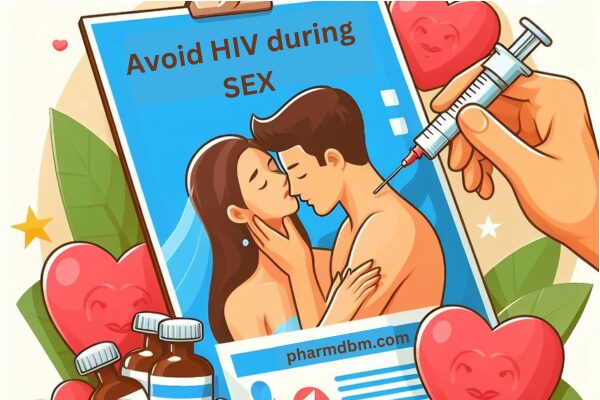
The chances of transmitting HIV through oral sex are very low, but it can happen. Preventive measures, such as condoms, can further reduce the risk.
HIV transmits through some bodily fluids. The virus can pass through direct contact with fluid or by sharing syringes.
This article describes the transmission of HIV through oral sex and provides some prevention tips.
Is it possible to transmit HIV via oral sex?

According to the Centers for Disease Control and Prevention (CDC), there is little to no riskTrusted Source of HIV passing through oral sex.
However, it might happen if someone with HIV ejaculates semen into the mouth of a sexual partner.
This transmission is only possible if the person ejaculating has a detectable viral load, which refers to the amount of HIV present in the blood.
Antiretroviral medications reduce the number of viral cells in the body, which can eventually result in an undetectable viral load. For someone with an undetectable viral load, the chances of transmitting HIV through any sexual activity are effectively zero.
The virus might also transmit during oral sex if the vaginal fluid of someone with HIV enters a partner’s bloodstream through cuts or sores in their mouth.
How is HIV transmitted?
As the CDC reports, HIV cannot usuallyTrusted Source pass from person to person through:
- saliva
- the air
- water
- sweat
- tears
- closed mouth kissing
- insects
- pets
- sharing toilets
- sharing foods or drinks
The virus can only transmitTrusted Source through contact with:
- blood
- semen
- pre-ejaculate fluid
- rectal fluids
- vaginal fluids
- breast milk
These fluids might enter the bloodstream through damaged tissue or mucous membranes or by injection using shared needles or syringes.
Parts of the body with mucous membranes include the:
- rectum
- vagina
- penis
- mouth
HIV can also pass through oral sores, cuts in or around the mouth, or bleeding gums during open-mouthed kissing. If a person does not have sores, cuts, or bleeding gums, it is safe to kiss.
Risks by type of oral sex
During oral sex, the transmission of HIV is possible if someone who has a detectable viral load ejaculates into the mouth of a sexual partner.
For this reason, engaging in fellatio, or mouth-to-penis sex, may increaseTrusted Source the chance of HIV transmission if the partner has bleeding gums or oral sores or cuts.
However, the risks of the virus passing in this way are still substantially lower than those associated with anal or vaginal sex.
During cunnilingus or mouth-to-vagina sex, HIV can pass via vaginal fluid. This is more of a risk if the person performing the cunnilingus has oral cuts, oral sores, or bleeding gums.
When is the risk higher?
HIV is more likely to pass to others during the early stages of the infection.
Some factors that increase the risk of transmission include:
- sores or cuts in the mouth
- sores in or around the vagina or penis
- bleeding gums or gum disease
- contact with menstrual blood
- the presence of any other sexually transmitted infection
- the presence of a throat infection
- damage to the lining of the throat or mouth
How to reduce the risk of transmission
Although the risk of HIV passing to another person through oral sex is low, people can take steps to reduce it further.
For example, a person who has a penis and HIV can avoid ejaculating in the mouth of their sexual partners. They can do this by using a condom or withdrawing the penis before ejaculation.
A dental dam is another option. This is a small latex or silicone sheet that a person places over the vagina, anus, or mouth during sex.
Flossing or brushing the teeth can cause the gums to bleed, so it might also help to avoid this right before sexual activity.
People without HIV can take additional steps to avoid transmission, including:
- taking preexposure prophylaxis (PrEP) medication beforehand
- using condoms or dental dams correctly during all sexual activities
- avoiding lubricants with an oil base, such as Vaseline or baby oil
- taking postexposure prophylaxis (PEP) within a couple of days after sexual contact
- getting regular sexual health checkups
People with HIV should take antiretroviral medication exactly as their doctor recommends.
Early symptoms of HIV
In the early stages of HIV, people might experience:
- fever
- chills
- night sweats
- fatigue
- rashes that are not itchy
- aching muscles
- a sore throat
- swollen glands, or lymph nodes
- oral sores
These can last for a few days to several weeks.
It is worth noting that some people experience no symptoms at all during the early stages of HIV.
Learn more about possible early symptoms of HIV.
When and how to get tested
If someone suspects they have come into contact with HIV in the last 72 hoursTrusted Source, they should have an HIV test immediately. A doctor, community health center, or hospital can provide the test.
A doctor may prescribe PEP medication, which can prevent HIV. Though these medications are not 100% effectiveTrusted Source, taking them as soon as possible reduces the risk.
A person might need to take the medication once or twice a day for 28 days.
An HIV test might be one of the following:
- Nucleic acid test: This involves detecting HIV in a blood sample 10–33 daysTrusted Source after exposure to the virus.
- Antigen and antibody combination test: This can detect HIV in the blood 18–45 days after exposure to the virus.
- Antibody test: Using blood from a finger prick, this detects HIV 23–90 days after exposure.
